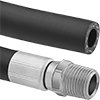Filter by
Retaining Ring Style
Groove Diameter
Ring Thickness
Groove Width
Ring OD
Ring ID
Finish
Panel Thickness
Distance from Center of Hole to Edge
Specifications Met
Length
DFARS Specialty Metals
Export Control Classification Number (ECCN)
Fastening and Joining
Fluid Handling































